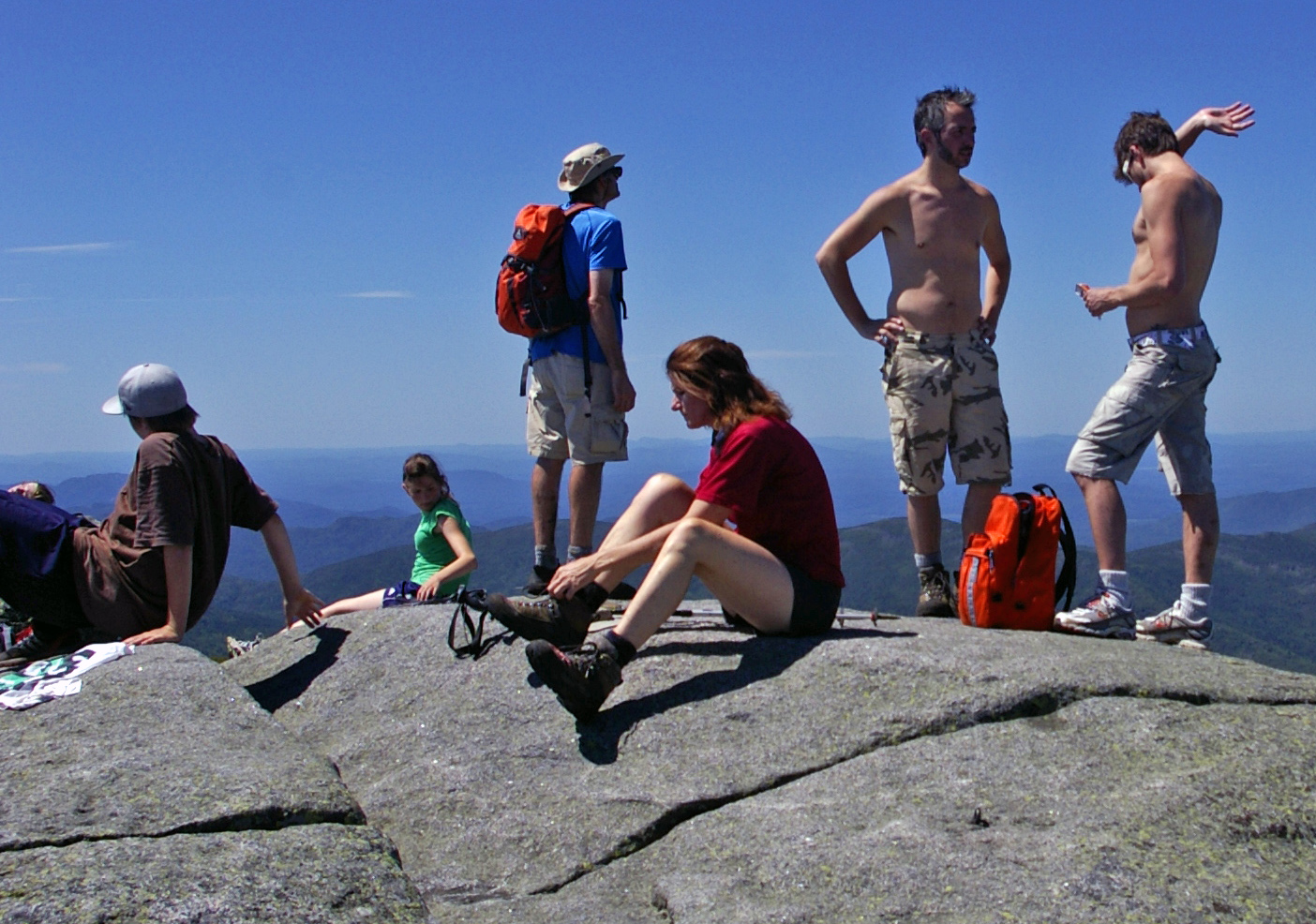Algonquin Peak on:
[Wikipedia]
[Google]
[Amazon]
Algonquin Peak is in the MacIntyre Range in the town of  The mountain's summit is an
The mountain's summit is an
Image:AlgonquinWaterFall.jpg, Waterfall on the trail to Algonquin Peak
Algonquin Peak hike and trip report.
September 2015.
Hiking Algonquin Peak
PureAdirondacks.com {{Mountains of New York Mountains of Essex County, New York Tourist attractions in Essex County, New York Mountains of New York (state)
North Elba
North Elba is a town in Essex County, New York, United States. The population was 8,957 at the 2010 census.
North Elba is on the western edge of the county. It is by road southwest of Plattsburgh, south-southwest of Montreal, and north of ...
, in Essex County, New York. It is the second highest mountain in New York,Goodwin, Tony, and David Thomas-Train, Editors. ''High Peaks Trails'', 14th Edition. Lake George, NY: Adirondack Mountain Club, 2012. p.254 and one of the 46 Adirondack High Peaks in Adirondack Park
The Adirondack Park is a part of Forest Preserve (New York), New York's Forest Preserve in northeastern New York (state), New York, United States. The park was established in 1892 for “the free use of all the people for their health and pleasur ...
. Its name comes from its reputedly being on the Algonquian side of a nearby informal boundary between the Algonquian and their Iroquois
The Iroquois ( or ), officially the Haudenosaunee ( meaning "people of the longhouse"), are an Iroquoian-speaking confederacy of First Nations peoples in northeast North America/ Turtle Island. They were known during the colonial years to ...
neighbors.
Algonquin is popular with hikers, accessible from the popular Adirondak Loj
The Adirondak Loj (pronounced "Adirondack Lodge") is a historic lodge in North Elba, Essex County, New York. It is near Lake Placid in the Adirondack Mountains. The current facility, located on the shore of Heart Lake, was built in 1927 and i ...
trailhead near Heart Lake outside Lake Placid for a day trip. While the climb is shorter than that of nearby Mount Marcy
Mount Marcy (Mohawk: ''Tewawe’éstha'') is the highest point in New York, with an elevation of . It is located in the Town of Keene in Essex County. The mountain is in the heart of the Adirondack High Peaks region of the High Peaks Wildern ...
, it is steeper, requiring almost as much vertical ascent in a considerably shorter distance.
The usual route is via the blue-blazed Van Hoevenberg Trail to its junction with the yellow-blazed MacIntyre Range Trail and following that the remaining to the summit, during which the route gets progressively steeper and rockier, going over many steep rock chutes called "slides".
 The mountain's summit is an
The mountain's summit is an alpine zone
Alpine tundra is a type of natural region or biome that does not contain trees because it is at high elevation, with an associated alpine climate, harsh climate. As the latitude of a location approaches the poles, the threshold elevation for alp ...
above tree line
The tree line is the edge of the habitat at which trees are capable of growing. It is found at high elevations and high latitudes. Beyond the tree line, trees cannot tolerate the environmental conditions (usually cold temperatures, extreme snow ...
, and views of the surrounding high peaks are available in all directions. However, the large numbers of hikers on the summit have in the past caused damage to the fragile plant life, and strict regulations have been put in place both at the trailhead and on the summit (all hikers must sign in; no dogs are allowed without a leash) to protect it. On busy days a Summit Steward both reminds hikers of these rules and educates them about the ecosystem.
Less frequently, the mountain is approached from the southeast via the steep, narrow, Boundary Trail from Lake Colden. This trail is also dangerous because of the poor markings and steep, slippery slides that streams have formed on.
Notes
Gallery
External links
* * *Algonquin Peak hike and trip report.
September 2015.
Hiking Algonquin Peak
PureAdirondacks.com {{Mountains of New York Mountains of Essex County, New York Tourist attractions in Essex County, New York Mountains of New York (state)